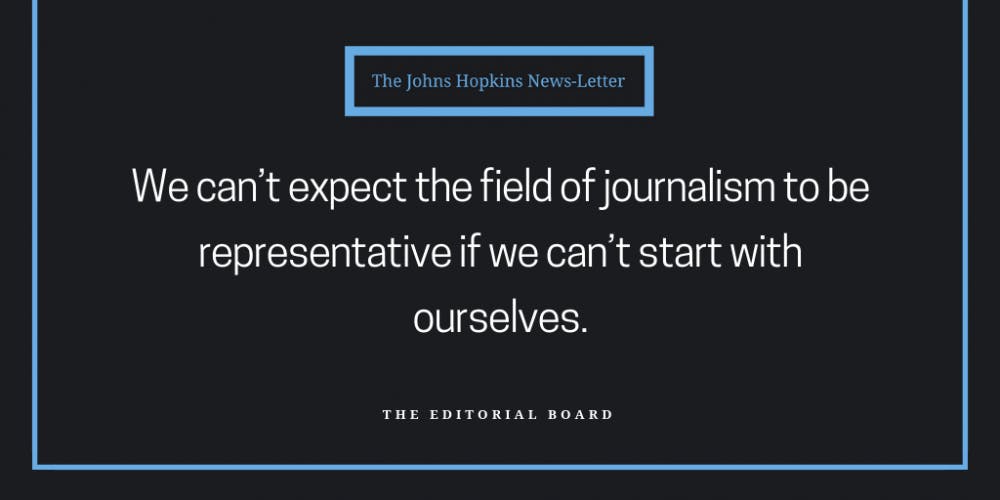Each week, our editorial board explores the issues facing the Baltimore and Hopkins community and shares our stance on the ones we find most pressing. This week, we’re taking some time to look inwards and examine how The News-Letter can be a more representative newspaper.
We were inspired by a diversity survey and subsequent editorial published by our fellow student journalists at The Daily Princetonian in January. Titled, “Our diversity and what we can do about it,” the piece examined results from a survey of the paper’s staff and proposed solutions for making the paper more representative of Princeton’s student body.
We decided to conduct a similar survey of The News-Letter’s staff, asking editors and staff members to anonymously answer questions about everything from household income to race, from gender identity to sexual orientation. If we want to truly be a paper of record – one that amplifies the voices of our community – we believe that critically examining our own organization is essential.
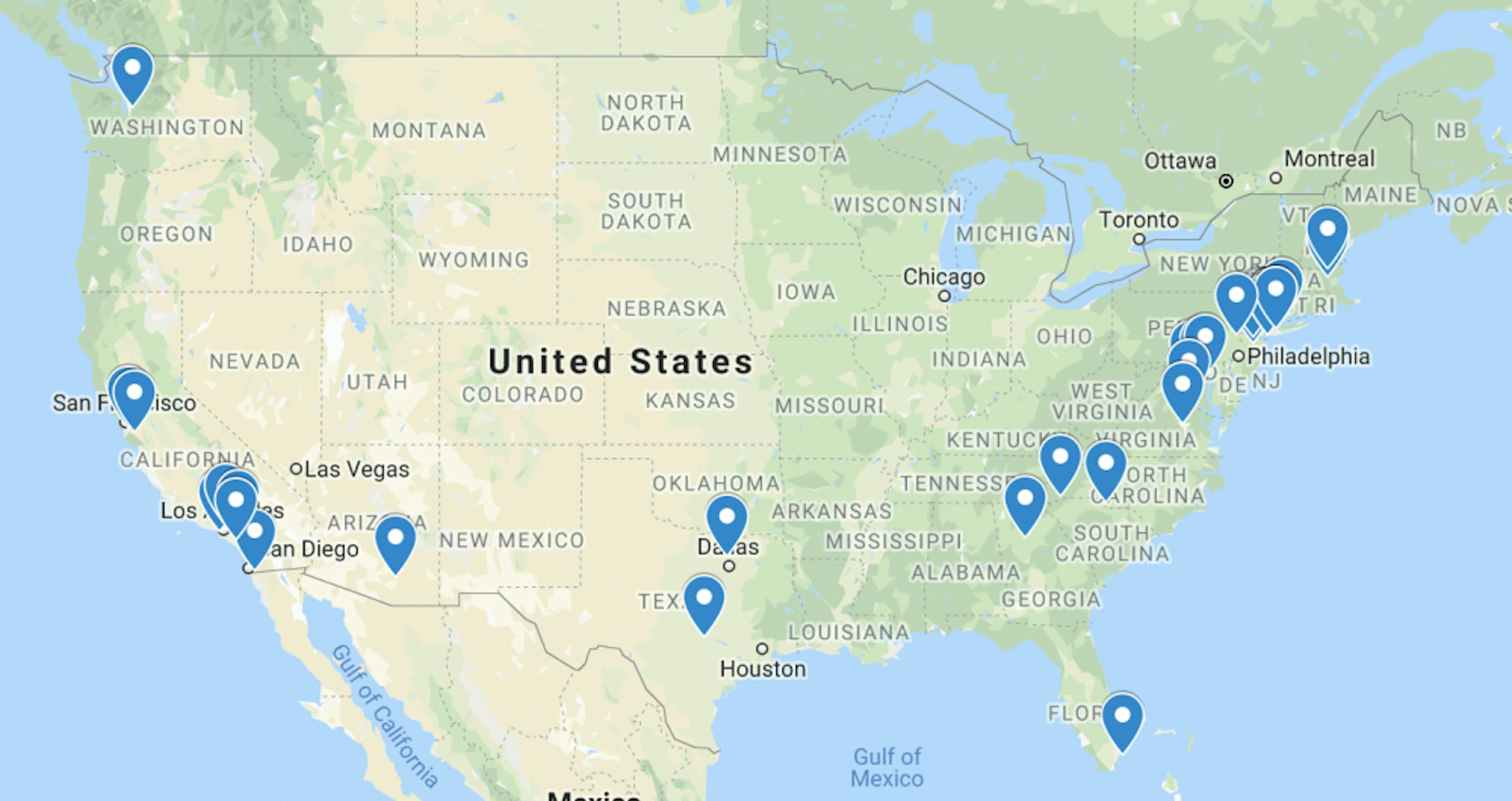
The results were not surprising, but they were concerning. Like The Daily Princetonian, we recognize that our newspaper currently consists of primarily white and Asian students from higher-income households. We can, and must, do better in making our paper more accessible to students of diverse backgrounds, because diversity in journalism matters. Those in leadership positions decide which stories are told, which sources are interviewed and which perspectives are given a platform. A diverse newspaper is one that is better equipped to reflect the community of which it is a part and one that is better able to inform its readers.
Journalism as an industry has a diversity problem. As student journalists, we are painfully aware of this. For people of low-income backgrounds, financial cost is a significant barrier to entering the field. The average annual salary for a reporter in the U.S. is a mere $40,910, and there are few paid internships for young reporters. We see the financial barrier playing out at The News-Letter, too. Being an editor often requires steep time commitments; this can be a major deterrent for students who cannot afford to spend hours writing or editing for no pay. In past years, many writers were unable to run for editor positions because it meant taking unpaid time out of their jobs. The News-Letter aside, aspiring student journalists at Hopkins also have little means of financial support. We can apply for the $5,000 Louis Azrael Fellowship, but this is not enough to make journalism a financially sustainable option.
Regardless of these systemic obstacles, there are still measures we can take to be more proactive in making our paper more representative. We’ve outlined the results of our survey, and some solutions below, but we know that there is much work to be done. In order to aid The News-Letter in becoming a more representative student newspaper, we are establishing a new leadership position for the 2019-2020 year: the role of Public Editor. The Public Editor will engage with our readership and act as a liaison between our audience and our paper. Generally, public editors serve as a bridge between the audience and the newspaper by responding to reader feedback and criticism. Their job is to ensure that the paper is transparent, relevant and accountable to its readers. We hope that the Public Editor will help us identify and tell the stories that matter most to our readers and to the community that we serve.
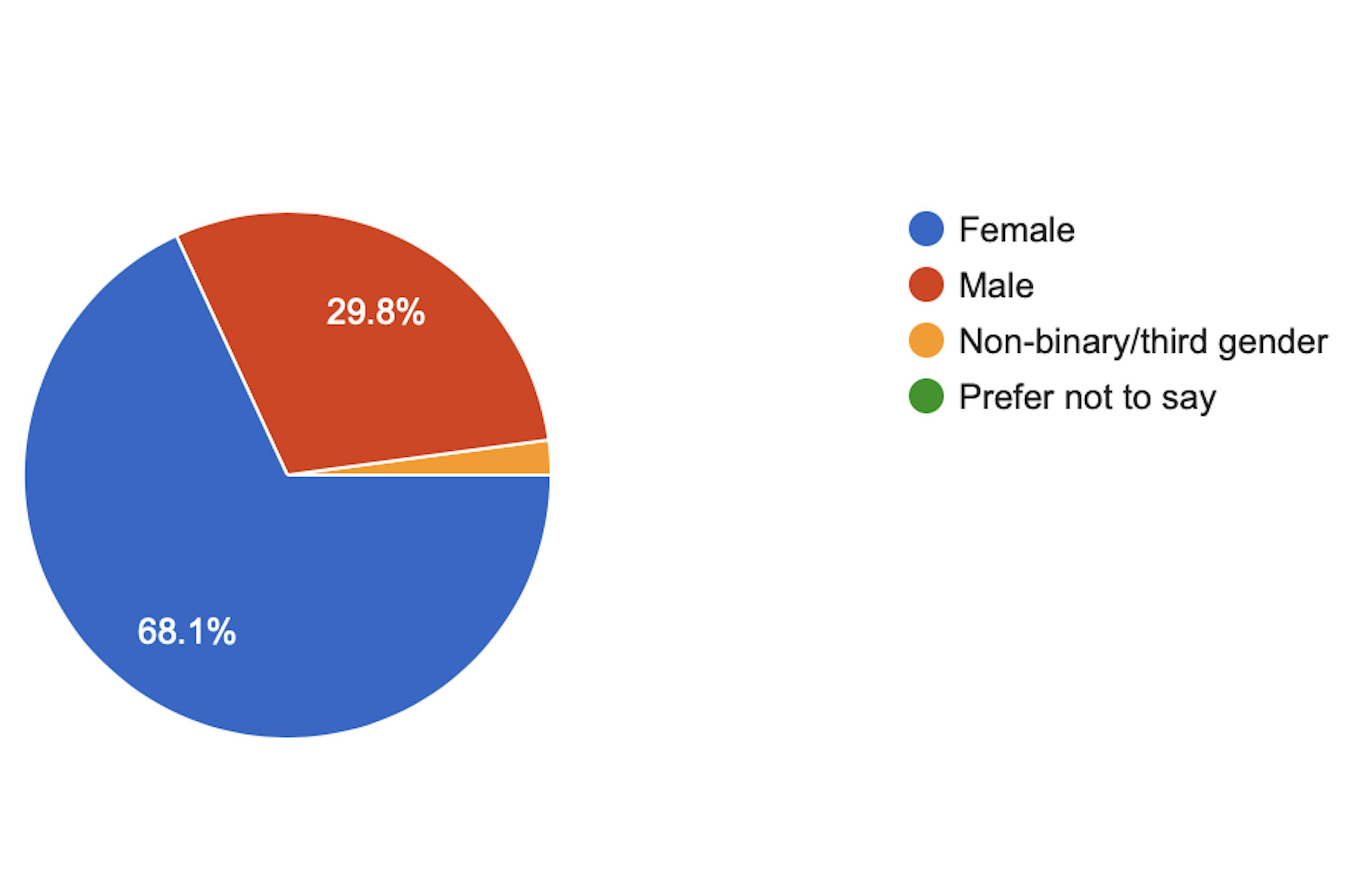
Results and Solutions
Out of approximately 70 editors and staff writers to whom we sent our survey, two-thirds responded. The survey was open for nine days and featured 15 questions.
Notably, our paper consists primarily of women and students from minority racial groups. 68.1 percent of The News-Letter’s staff identifies as female. Of the University’s 5,294 undergrads, 52 percent are women. In terms of race, our staff is 59.6 percent Asian, 46.8 percent white, 4.3 percent black, 4.2 percent Middle Eastern, 2.1 percent Native Hawaiian or Pacific Islander and zero percent Native American. 6.4 percent identified as Hispanic or Latinx. Students were allowed to select more than one option so the total percentage adds up to more than 100. In contrast, Hopkins is 31 percent white, 30 percent Asian, 9.9 percent black, 13.6 percent Hispanic, 8.9 percent “international,” 4.9 percent other/unsure and less than 1.6 percent Native American/Pacific Islander/Alaskan Native.
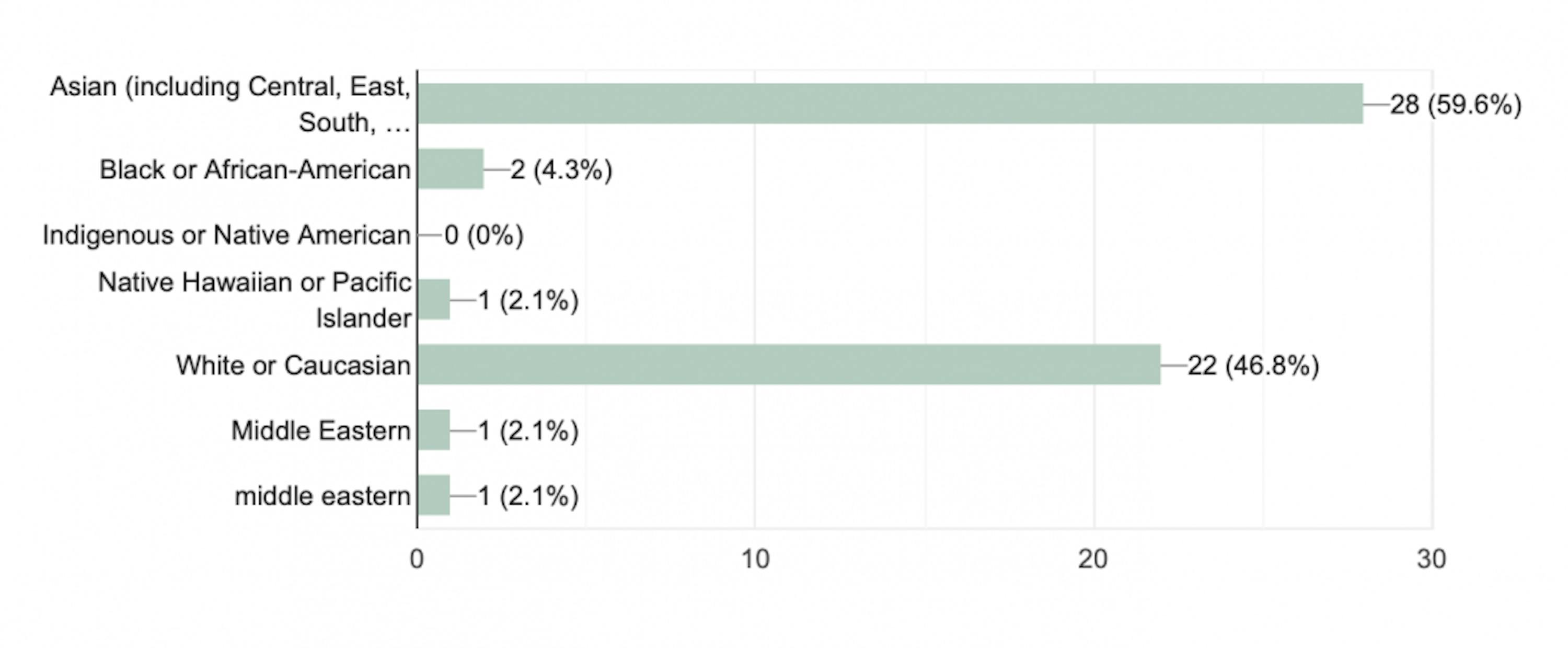
Compared to national newsrooms, The News-Letter stands out. Minority journalists comprise just 17 percent of the workforce in newsrooms that responded to a 2016 American Society of Newspaper Editors Diversity Survey. The survey also found that only 28 percent of news organizations had at least one minority journalist and 77 percent reported having at least one woman among their top three editors. We are happy to be breaking the trend in this regard. But we are concerned that the overwhelming majority of minority students in our paper are Asian and that we are underrepresenting other minority groups in the Hopkins community.
One finding that we wish to highlight is the underrepresentation of black students in The News-Letter. This is particularly concerning in light of the fact that we are a paper based in a predominantly black city. Unfortunately, this kind of underrepresentation is all too common in Baltimore. The Baltimore Sun, WYPR and Baltimore magazine are just some local news organizations that are predominantly white. The staff of our city’s major newspaper, The Sun, is 81 percent white overall.
In terms of socioeconomic diversity, we’re also falling short. Our survey results show that out of the respondents who knew their household’s annual income, 65.7 percent had household incomes of $100,000 or higher. In addition, 4.3 percent of our respondents were first generation college students. In contrast, first-generation college students make up 9.8 percent of the Hopkins undergraduate population.
To make our paper more accessible to students from first-generation and low-income backgrounds, we would love to build an alumni network that can offer resources to our staff. This year, we have partnered with the Career Center to host networking events with alumni and local journalists. However, in the future, an alumni association could also offer financial aid to staff who need it. Student newspapers like the Harvard Crimson and The Daily Californian offer such aid through their alumni boards. This, of course, is an ambitious project, especially since it requires extensive collaboration with alumni. But as our alumni network increases, we hope to tackle it in the long run.

One of the things we are most proud of at The News-Letter is that our organization is open to all Hopkins students. You do not need to have prior journalism experience or to undergo an application process to join. In this way, we have tried to remove as many barriers as possible. We believe that every student who wants to gain experience in journalism and learn from their peers should have that opportunity.
That said, we can be more proactive in recruiting members. We can reach out directly to student groups organized around specific underrepresented cultures, racial groups, ethnicities, religions and other marginalized communities. We can do more to promote The News-Letter in a greater variety of departments. As we work on building a more diverse paper, we can do a better job of building a more inclusive community. Some practical initiatives we can incorporate for our leadership would be to require cultural competency training through Students Educating and Empowering for Diversity (SEED) or Safe Zone Training. While reducing barriers to joining The News-Letter is important, so is making our organization inclusive and welcoming for all members of the student body.
In terms of sexual orientation and gender identity, 30.4 percent of our staff identifies as being LGBTQ. While Hopkins does not release data on the number of LGBTQ-identifying students, 10 percent of college-age students nationwide identify as being a part of the LGBTQ community. We are proud that our demographics reflect the continued growth of this community across the nation.
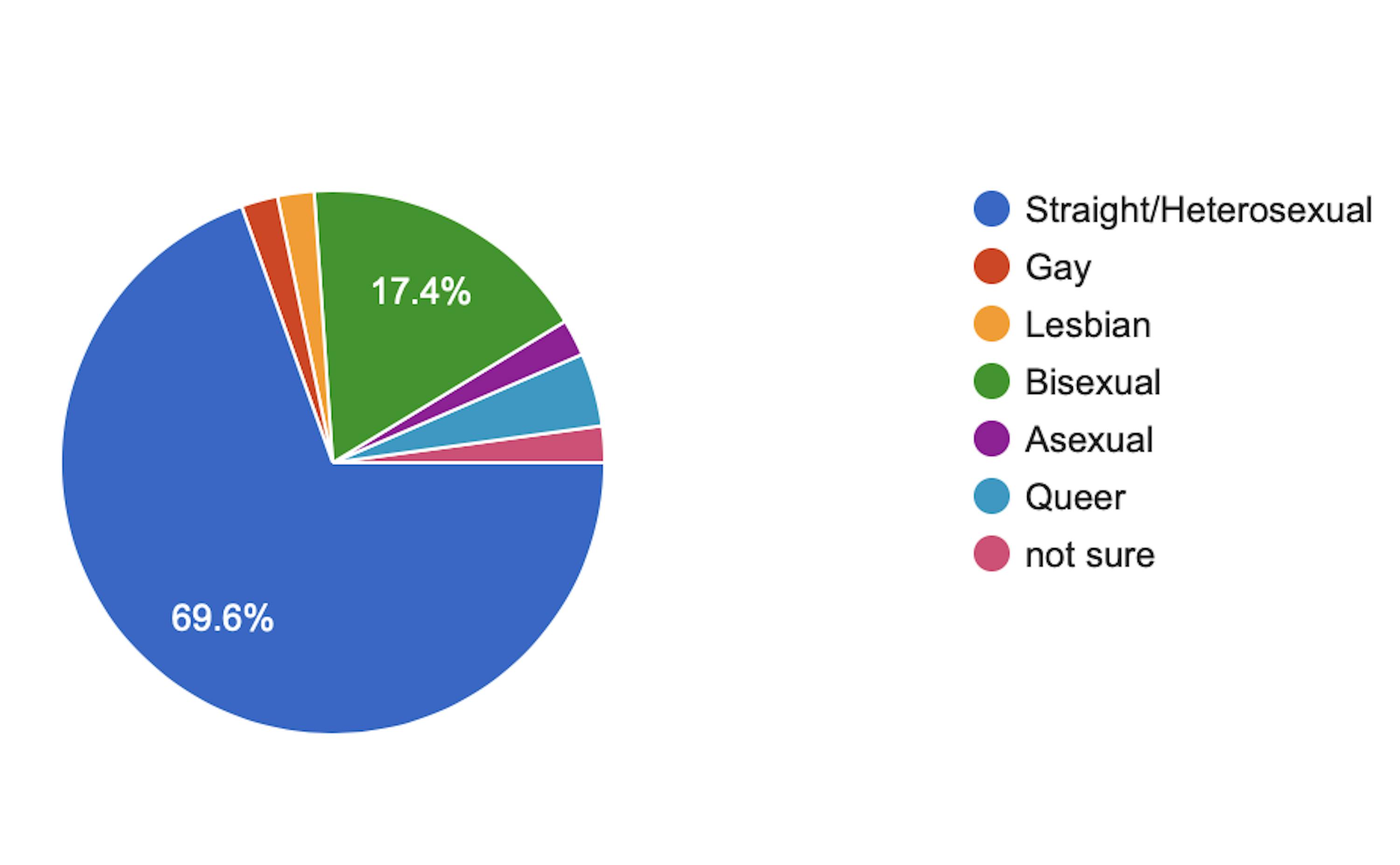
There are other categories in which we can be more representative. In terms of major, 68.1 percent of respondents are studying the humanities and social sciences. This contrasts sharply with the distribution of majors at Hopkins — only about one-third of the student body studies humanities and social sciences. While it may not be surprising that a newspaper will draw more humanities students, we can still do more to give a platform to STEM students and their concerns.
Since 1896, The News-Letter has served as a space for students to tell their stories. And as our campus has grown in size and diversity, so has its paper of record. Yet, we still have room for improvement. Students from underrepresented and disadvantaged backgrounds still face barriers to entering journalism, and we believe it is our responsibility to think of ways to address those challenges. After all, we can’t expect the field of journalism to be representative if we can’t start with ourselves.

